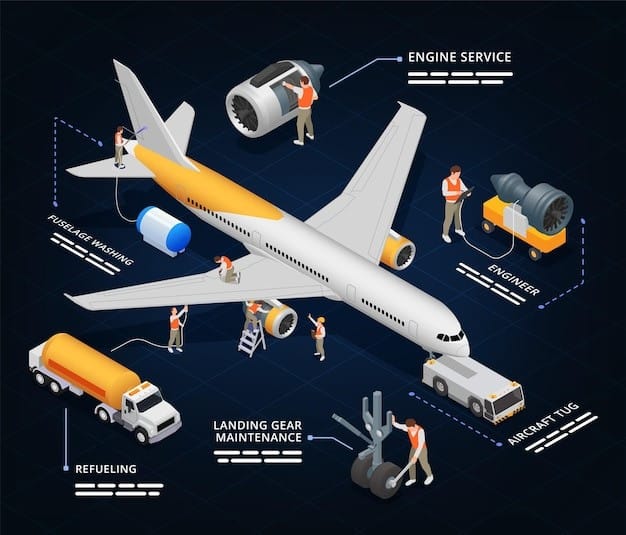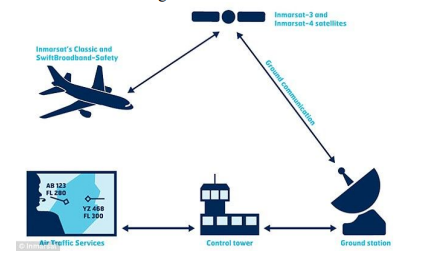Steps to Capitalize on India's USD 15 Bn Aviation Industry
With the sector growing at a strong 10.7% annually, driven by escalating demand, major infrastructure investments, and advanced technologies, the opportunity to capitalize on this growth is rapidly diminishing.

As India’s aviation market is set to reach $26.71 billion by 2030, the real question is not if you should invest, but how quickly you can get in. With the sector growing at a strong 10.7% annually, driven by escalating demand, major infrastructure investments, and advanced technologies, the opportunity to capitalize on this growth is rapidly diminishing.
The expanding middle class and supportive government policies, like the UDAN scheme, are speeding up market changes. This is creating significant opportunities for investors who act now. As the market continues to grow, those who hesitate may miss out on a sector that’s expected to double in size over the next decade.
In this fast-paced environment, every moment counts. The time to act is now before this high-growth market takes off without you.
Key Highlights
- Infrastructure Investment: At the CAPA India Aviation Summit in New Delhi, the government revealed that there will be an investment of INR 980bn in building airport infrastructure to cater to the massive demand for flights.
- Technological Advancements: The adoption of technologies like artificial intelligence (AI), AR/VR, blockchain, big data, and machine learning (ML) will help in advanced monitoring systems, quicker check-in procedures, and effective luggage management.
- Fuel Efficiency: Innovations in new fuel and propulsion sources are essential, with airframe efficiency improvements likely to yield savings of 10-20%, reducing operating costs for airlines, enhancing sustainability, and supporting the growing demand for air travel.
- Government Initiatives: Initiatives like the UDAN (Ude Desh Ka Aam Nagrik) scheme, which was launched in June 2016 to provide half of the flights at subsidized fares and is expected to be in process for 10 years (till 2026).
Maximizing Fuel Efficiency for Cost Savings and Sustainable Growth in Aviation
Fuel efficiency is how well airlines can utilize fuel to transport passengers and cargo. Airlines try to minimize the amount of fuel burned per passenger over the distance traveled. There are various factors affecting efficiency, and improving it will benefit airlines both financially and environmentally.
- Cost Saving and Profitability: The largest operating cost for airlines is fuel, and it exceeds 30% of their total expenses. An increase in efficiency will directly lead to lower fuel consumption, reducing costs.
A study by CAPA India proposes that a reduction in 1% consumption of fuel can directly improve the profit margin of the airlines from 0.5% to 1%, leading to savings.
- Environmental Sustainability: This industry participates in emitting greenhouse gases, and improved fuel efficiency will reduce those emissions.
The improvements in fuel efficiency can lead to an approximately 1.5% reduction in CO2 for airlines, which is crucial for achieving sustainable growth.
- Consumer preference and affordability: a lower cost of fuel will eventually lead to reduced fare prices, affordable air travel, and increasing demand.
IndiGo, with a young and fuel-efficient fleet, has been offering competitive fares.
- Innovation and Technological Advancements: Fuel efficiency incentivizes airlines and manufacturers to invest in new technologies, leading to the adoption of cleaner fuels like Sustainable Aviation Fuels (SAF).
Studies suggest sustainable aviation fuels can reduce lifecycle carbon emissions compared to traditional jet fuel.

Driving Growth Behind India's Aviation Market Surge
- Rising Disposable Income and Growing Middle Class: With more disposable income, Indians, particularly the urban middle class, are opting for domestic air travel more frequently, which is catalyzing market growth.
India’s middle class is expected to reach 580mn by 2025.
- Government Initiatives and Policy Reforms: The government is continuously developing schemes promoting regional development.
Policies like the Regional Connectivity Scheme (RGS) aim to connect smaller cities and towns with major hubs and improve overall infrastructure.
- Increasing Tourism Industry: Growth in tourism leads to higher demand for air travel, benefiting the aviation industry.
Foreign Tourist Arrivals (FTAs) in India during 2022 increased to 6.44 million as compared to 1.52 million in 2021, registering a growth of 321.54% and achieving a 58.9% recovery as compared to the pre-pandemic year 2019.
Emerging Technologies in India's Aviation Sector
Technology is playing a key role in the Indian aviation market, driving growth, and efficiency, and improving the passenger experience.
- Cloud-based Solutions: These are modern, sustainable ecosystems that use smart technology to increase efficiency for airports and airlines, streamlining passenger journeys and addressing operational challenges.
India has been developing SITA, a modern ecosystem with emerging technology, with Digi Yatra contributing to its success.
- Enhancing Passenger Experience: Airlines are investing heavily in mobile apps for bookings, check-in, baggage tracking, and real-time information, reducing wait times.
Initiatives like Digi Yatra use facial recognition and e-boarding for seamless travel, improving security and passenger flow at airports.
- Supporting Low-Cost Carriers (LCC): Online travel agencies (OTAs) and airline websites allow for efficient ticket distribution and fuel LCC growth by making air travel more accessible and affordable.
LCCs like IndiGo use data analytics to optimize pricing strategies, routes, and fleet management, contributing to their success.
- Budget Airlines and Increased Affordability: Airlines are choosing low-cost carriers to reduce their costs, making air travel accessible to a wider population.
Indigo and SpiceJet have been focusing on aggressive pricing strategies and low-cost carriers to increase passenger traffic.

Key Takeaways from Global Aviation Case Studies
Case Study 1: India
The government in India implemented a new scheme, “Ude Desh ka Aam Nagrik (UDAN), which provides subsidies for airlines operating on regional routes. This has encouraged airlines to explore new markets and offer affordable fares.
Results: UDAN increased regional connectivity, boosted tourism and business travel in smaller cities, and is expected to develop 220 operational airports by 2025.
Case Study 2: USA
Legacy airlines dominated the US aviation market, making air travel expensive. Companies like Southwest Airlines offer budget travel options using low-cost carriers (LLCs), which have increased competition, forcing legacy airlines to adopt pricing strategies.
Result: Low-cost carriers have reduced average pricing and democratized air travel, encouraging passenger travel.
Case Study 3: China
Post-pandemic China invested heavily in infrastructure, building new airports, expanding existing ones, and offering competitive pricing to encourage domestic travel.
Result: China’s domestic passenger traffic recovered faster than the global average, reaching 67.1% of pre-pandemic levels in 2021, with Guangzhou Baiyun Airport as the busiest domestic airport.
Anticipating Growth: Future Outlook of the Indian Aviation Market
- Increasing Passenger Traffic: India’s domestic passenger traffic has already surpassed pre-pandemic levels, indicating strong travel demand. Rising disposable incomes will fuel a desire for faster and more convenient air travel.
- Fleet Growth: The Indian aviation industry is projected to nearly quadruple its fleet size by 2041, requiring over 2,700 new airplanes, aligning with Boeing's forecast of 90% of South Asia's new airplanes going to India.
- Airport Development: Government initiatives like the privatization of airports are leading to substantial investments in infrastructure development, and improving passenger experience and capacity.
- Tourism Boost: A thriving aviation industry will act as a catalyst for tourism, contributing nearly $500Bn to the Indian economy by 2028 through travel and tourism spending.
- Job Creation: The aviation sector is expected to generate several jobs, with estimates suggesting a requirement for nearly 37,000 pilots and 38,000 mechanics by 2041, creating ripple effects in associated sectors.
Conclusion
The Indian aviation market is set for remarkable expansion, driven by growth rates and technological advancements. By 2030, it is projected to nearly double in size, reflecting the sector's vibrant future. Do you think these legacy airlines will be able to integrate sustainable aviation fuels and forgo their traditional methods?



